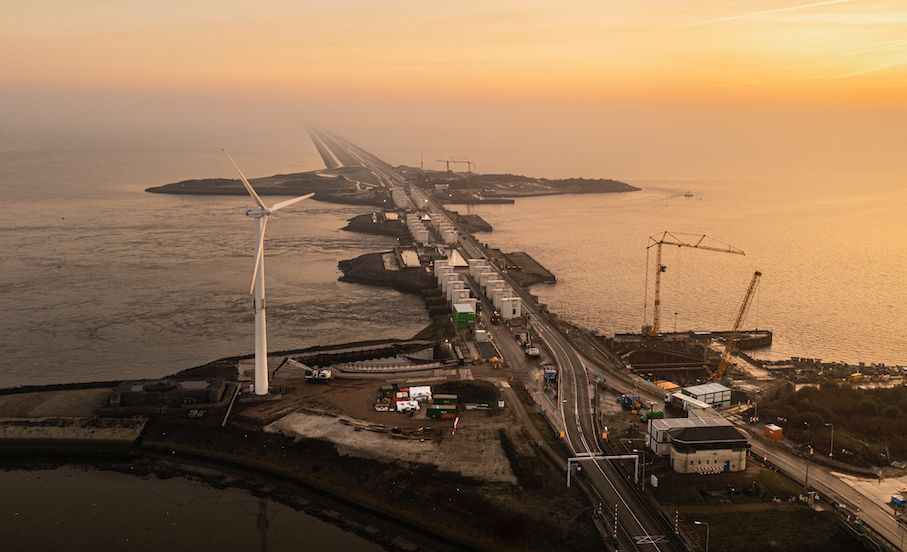Together we protect the Netherlands now and in the future against rising water
Due to the rise in sea level, we can discharge less. In addition, the supply of water from rivers and surrounding areas to the IJsselmeer is increasing. So we need to be able to discharge more water. That is why two pumping stations and extra discharge locks are being built. Two floodgates have also been built: one in Den Oever and one in Kornwerderzand. A unique fish migration river will be built at Kornwerderzand, so that fish can migrate back and forth between the salty Wadden Sea and the fresh IJsselmeer.
An incredibly large and unique project, which started in 2019. The various objects are all large and unique projects in themselves, which you will not find in many places. The Fish Migration River, for example, nowhere else in the world is an artificial tidal river created on the border between fresh and salt water in this way. Migratory fish need both fresh and salt water to reproduce, but due to barriers such as the Afsluitdijk, this was not always easy. Adding a fish migration river in the Afsluitdijk ensures that fish can swim more easily from salt to fresh water (and vice versa). The Fish Migration River will therefore contribute to better fish stocks in the future.
In order to be able to drain extra water from the IJsselmeer to the Wadden Sea, six large pumps are added to the Afsluitdijk. These pumps have a capacity of 2 MW each, so a total of 12 MW. In addition to these pumps, discharge locks are also added to the Afsluitdijk. The advantage of these discharge locks is that the water is moved from the IJsselmeer to the Wadden Sea based on the tides. By making optimal use of the discharge locks, the pumping stations can be used as little as possible (only when it is really necessary). This saves a lot of energy.

Cooperation
The project as a whole is carried out by the Levvel consortium (formed by BAM, Van Oord, Invesis and Rebel), commissioned by Rijkswaterstaat. Batenburg was initially asked to participate in the DO phase (final design) to arrive at the best possible system designs. Subsequently, it was requested to UO phase (implementation design) to realize a large part of the software development, hardware deliveries and cabinet construction. In addition, realizes the commissioning of all these installations.
To this end, various operating companies within Batenburg have joined forces. Batenburg Bellt has contributed to a large part of the DO (final design), especially around the control systems and plays a major role in the realization of software for these control systems, operating systems, transmission networks, testing and commissioning.
Batenburg Legs designs and builds various control cabinets (for different installations), and Batenburg JB Systems designs various control cabinets and devises the hardware required to realise the drive of a number of control systems (including the drive of the Fish Migration River). Batenburg Digital helps in realizing and testing the software of control systems. That is what we call: Stronger together.